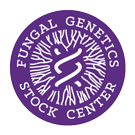Strain: Neurospora crassa
FGSC #507
Reporting Genes: sn
Species: crassa
Allele: C136
Alternate Strain Number: C136 R 3A
Mutagen: S
Depositor: MBM
Linkage Group: IC
Mating Type: A
Genetic Background: M
Opposite Mating Type: 947
ref1: Mitchell MB 1959. Genetics 44:847-856, PMID: 17247863
Genes
